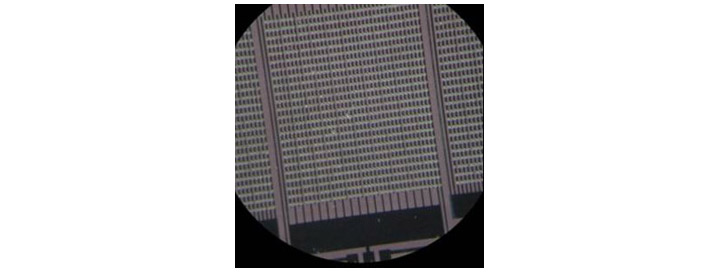High Aspect Ratio Structures Fabricated over SAW Resonators
The project has been successfully completed by Mr. Ramakrishnan, Mr. Harshal B. Nemade, and Mr. Roy Paily Palathinkal. From Center for Nanotechnology, Department of Electronincs and Communication ,Indian Institute of Technology Guwahati, Assam.
The Objectives of Project are fabrication of SAW resonators, fabrication of nano/micro-pillars made of polymers such as SU-8 of varying sets of aspect ratios on the surface of SAW resonators, measurement of resonance frequency of the developed SAW resonators, and experimental verification of the simulated result.
Surface acoustic wave (SAW) resonators and SAW delay line devices are widely used in sensor applications. SAW devices used in sensing applications extensively employ mass loading effect of a sensing film coated over the surface of the device. SAW resonators are mainly classified into two types: one-port SAW resonator and two-port SAW resonators. One-port SAW resonator function is obtained by multiple reflections between fingers of a long Interdigital transducer (IDT) or by reflections from reflectors at either end of a short IDT [4]. The shift in the resonance frequency of a SAW resonator owing to the changes in mass loading, conductivity, permittivity, and viscosity over the SAW path can be employed in sensing applications. Nomura et al. [5] reported mass loading effect of Langmuir-Blodgett film coated over the surface of a SAW resonator and demonstrated that an increase in mass loading decreases the resonance frequency. The density, elastic modulus, and dimensions of the thin film determine the amount of mass loading.


More than 150 SAW resonators were fabricated in three 4 inch lithium niobate wafers. SU-8 pillar structures were fabricated over the SAW patterns to study the mass loading characteristics of high aspect ratio structures. Recipe to fabricate high aspect ratio SU-8 structures on lithium niobate were identified during the project. Resonance frequency of each resonator with and without pillars was measured and the pillars dimensions were recorded using optical microscope and SEM.